Rane DJ is no stranger to DJ collaborations. Back in the 2000s, they released the Grand Master Flash edition of the Empath. In 2012, they released the Z-Trip edition of the Sixty-Two. Now, in 2021, Rane is collaborating with the legendary A-Trak to unleash the Seventy Signature A-Trak Edition.
Released just last year, the Seventy was Rane’s answer to the aging Pioneer DJ DJM-S9. Met with rave reviews amongst hip-hop, open format, and scratch DJs, the Seventy became an instant competitor in an increasingly crowded 2-channel market. However, while the Seventy’s thunder was stolen a little by the release of the DJM-S11 and the DJM-S7, it remains a favourite mixer among turntablists, scratch + battle DJs, and hip-hop/open format DJs alike.
Even though I have effectively done three separate reviews of the Rane Seventy-Two, I have yet to get my hands on a Rane Seventy until now. Therefore, while we will mainly focus on the Seventy A-Trak Edition, we will also discuss and compare it to the original Rane Seventy in this review.
So, what makes the Seventy Signature A-Trak Edition special? Let’s have a look.
Interested instead in just getting one for yourself? We have a batch headed to the DJTT store soon, order one here.
The Look
We can’t get into the Seventy A-Trak Edition without talking about its overall look. The most striking features are the silver paint finish and the chrome-capped knobs taken straight from the Rane MP2015 rotary mixer. These knobs have a classic 70s hi-fi look and add an air of elegance to the mixer.
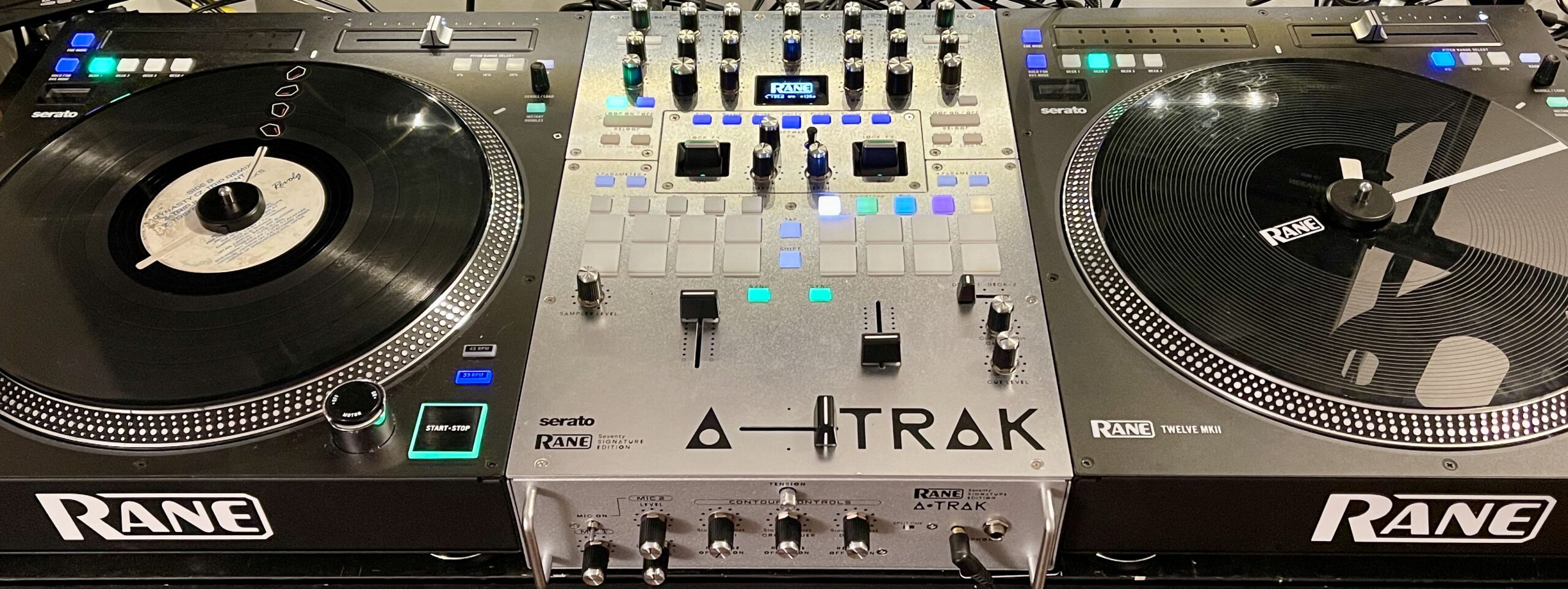
On the other hand, the mirrored, speckled paint finish – while incredibly eye-catching – does border a bit on the gaudy side, in my opinion. It especially stands out when sandwiched between the more common black finish of modern turntables or players. It matches up a little better with the older-school silver finish of some turntables. Even then, my 20-year old Technics 1200s have seen better days, and the bright silver of the mixer doesn’t compliment my faded turntables all that well.
The A-Trak font is… interesting; I don’t have too much of an opinion of it, but it’s unique, at least.
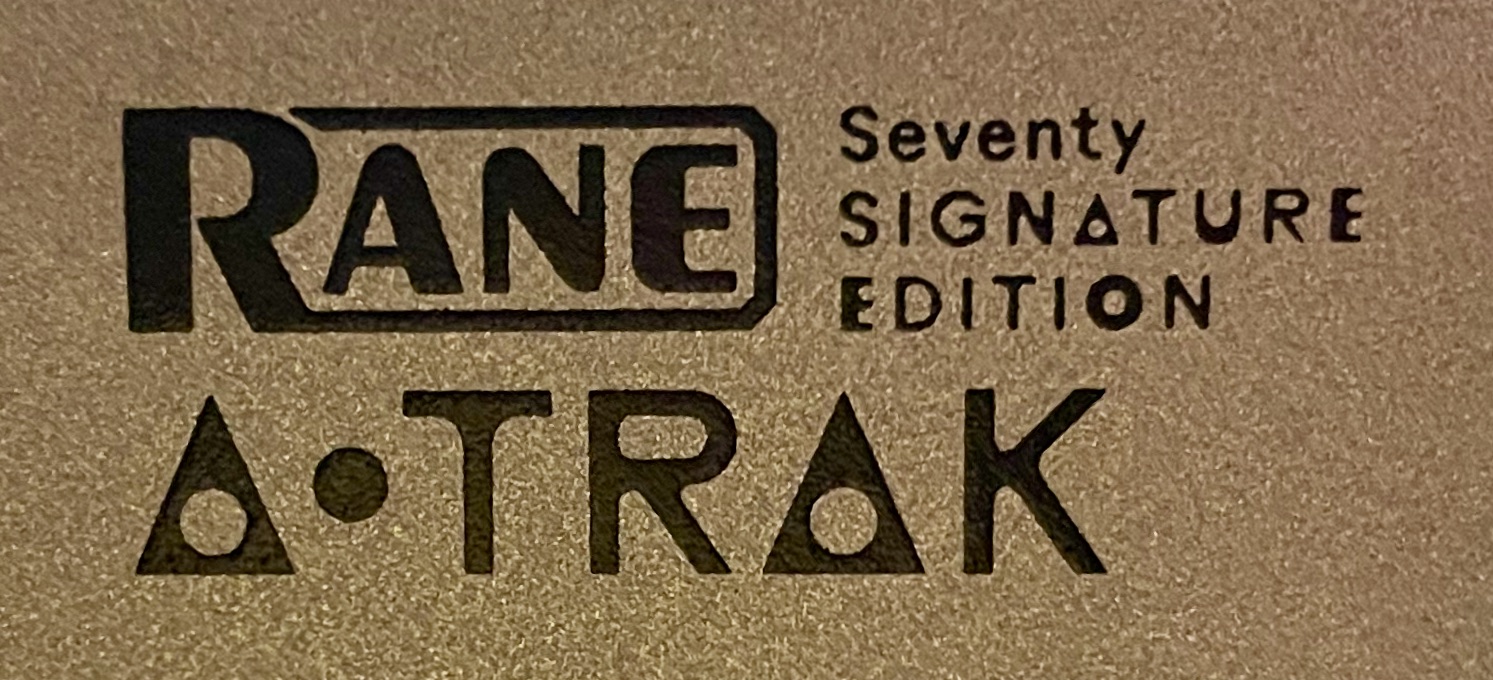
With all that said, I can’t deny that this is a great-looking mixer – even if I struggle to pair it with some matching players. I anticipate turntable/player skins hitting the market to match the A-Trak Edition colour scheme fairly soon, though.
The Knobs
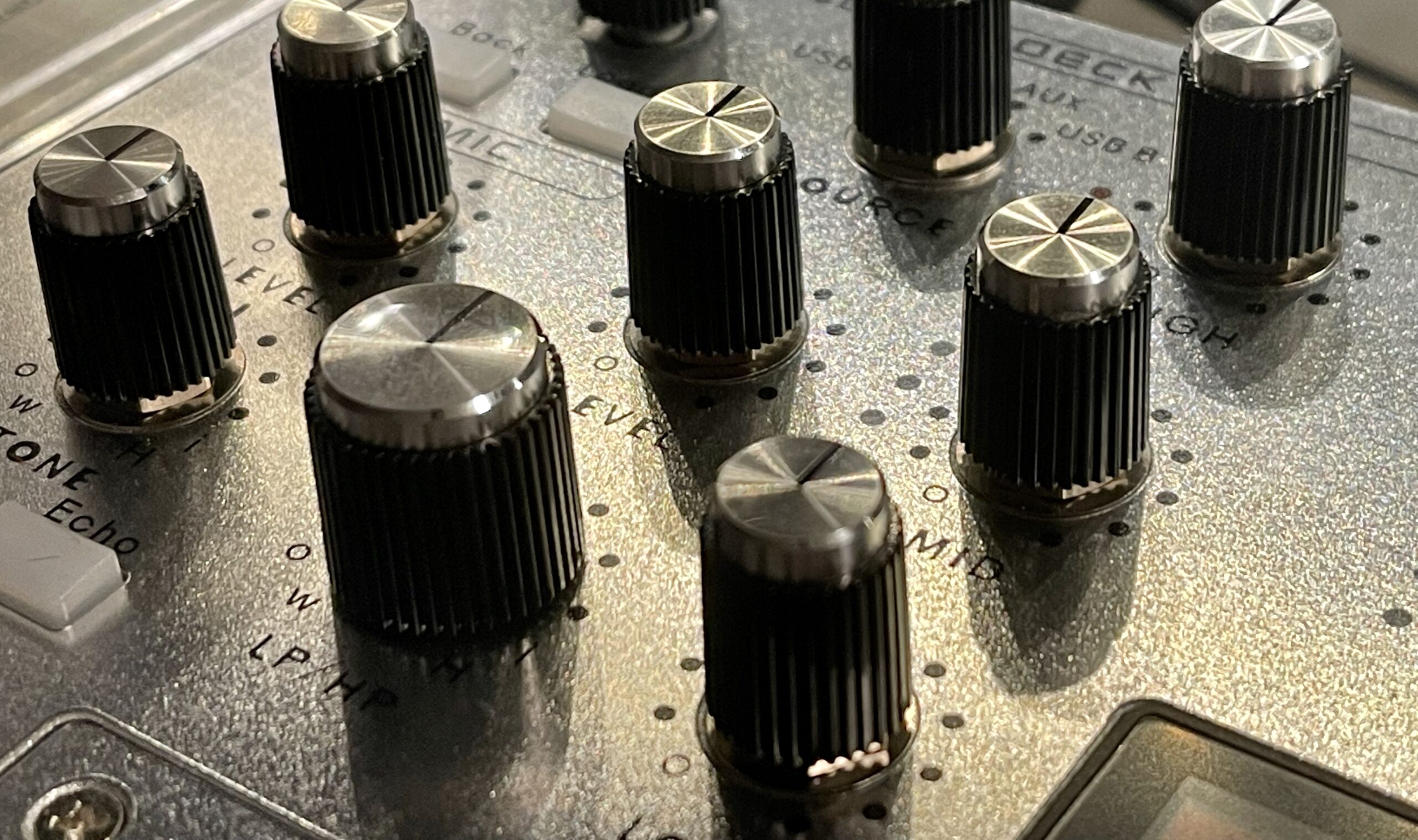
As mentioned, these seem to be the same knobs used on the MP2015 rotary mixer. The knobs are plastic with textured, knurled sides. They have these aluminum caps with a circular, brushed texture. The majority of the knobs are identical, with larger, chunkier knobs used for the Filters. They hearken back to the days that brushed aluminum was the standard for audio equipment.
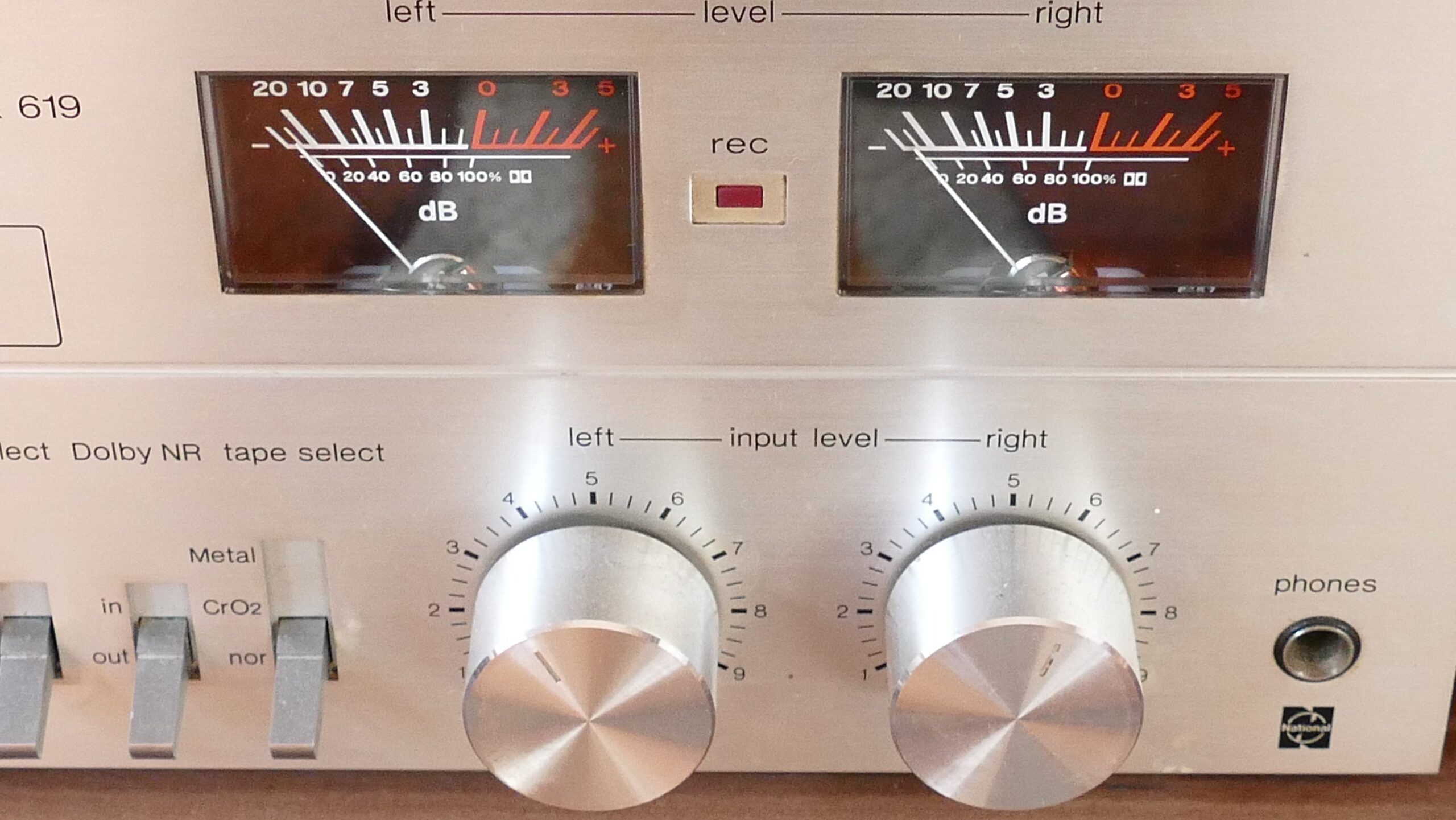
The stems are plastic, which is never my favourite material for pots. This is a personal preference, though. Metal stems feel a little sturdier and wobble less, whereas plastic stems feel a little smoother. The feel of the rotation seems to compliment the rotary knobs on the Seventy A-Trak Edition, though.
Overall, they feel great to the touch and are very pleasing to use, although I prefer a rubberized coating to the knurled plastic.
Fader FX
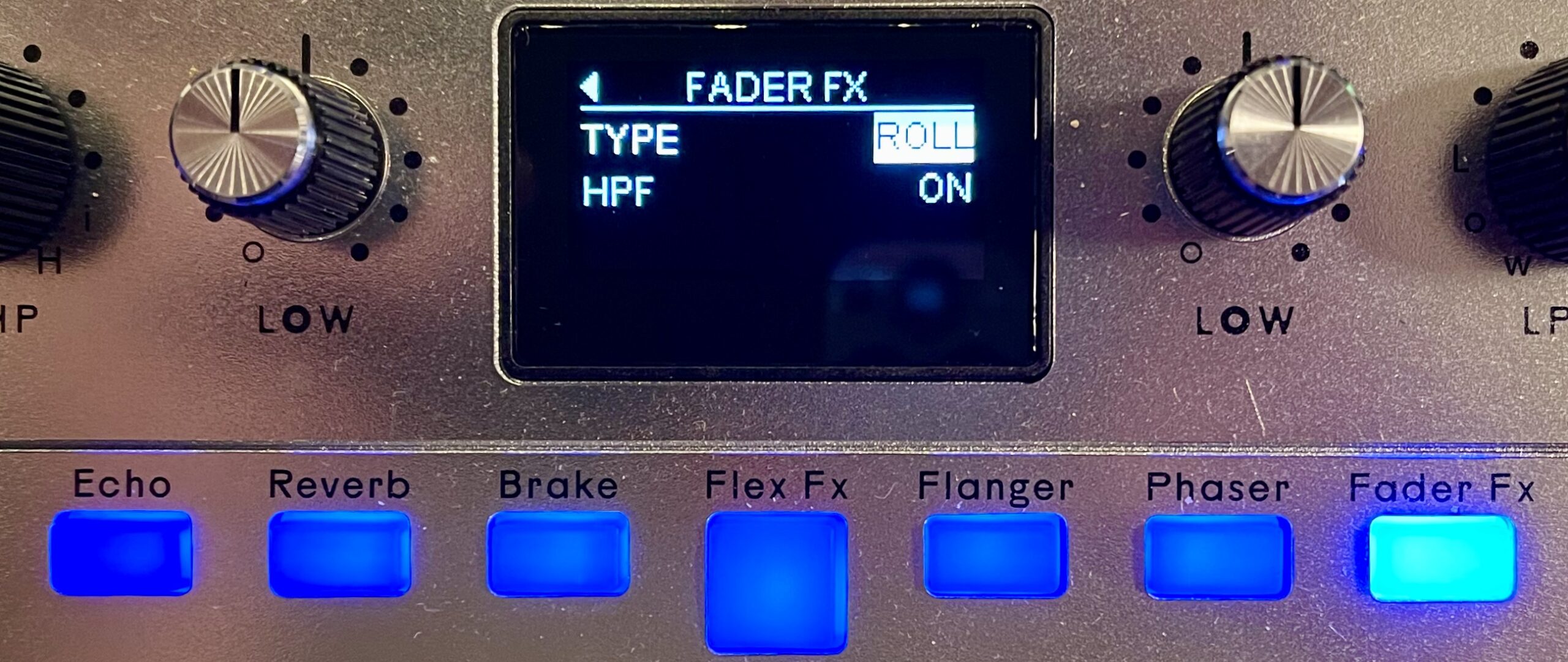
Another significant change in the Seventy Signature A-Trak Edition is the new Fader FX option, which replaces the Delay effect in the original Seventy. The Fader FX turns the line faders into a depth control for several effects. These include a Filter, a Roll effect, a Pitch modulator, and a Ring modulator. Each of these effects offers an array of tweakable parameters to change its character. You access these parameters by holding the Shift button and clicking on the Effect button.
I’m sure there will be DJs far more creative than I am that will come up with some great ways to take advantage of these effects. In the meantime, here’s my experience:
Oscillator Effects

You also get access to some tone generators to pitch the tone using the line faders. This feature is similar to the Synth effects found on the newer Pioneer DJ mixers. You choose between 4 different oscillators, and moving the line fader gives you control over the pitch on a chromatic level. Within the settings, you can adjust the root note of the tone as well as the octave.
Unfortunately, the keys don’t automatically shift to the key of your loaded track (like it does on the DJM S11 and S7 mixers), nor are you given a choice of scales to match your tracks.
Sound quality
The last major thing that sets the A-Trak edition apart from the OG Seventy (and Seventy-Two) is a customized sound signature tailored to A-Trak’s specifications.
In an interview with A-Trak (editor’s note: more to come on this interview soon…), I asked what changed with the mixer’s sound. Accentuating the low-end on the mixer was the goal of the audio tweaks. They accomplished this by cutting some of the midrange and higher-end frequencies to bring out the lows.
Our impression on the sound
The Seventy A-Trak Edition sounds excellent to my ear. It has the signature rich low-end and clarity I come to expect from Rane gear. That said, comparing directly to the original sound signature of the Rane Seventy-Two, I still think I prefer the original sound. When A/B’ing against the Seventy-Two, I found that dips in the midrange of the Seventy A-Trak Edition are pretty apparent. To my ear, there’s less clarity compared to the original signature on the Seventy-Two.
I didn’t get a chance to test the Seventy A-Trak Edition on a big system, though, so this sound profile might change when run through the high SPLs and full frequency of a large PA system with arrays of subs.
Now, we’ll take a look at some of the features seen both on the Rane Seventy & the A-Trak edition.
Layout
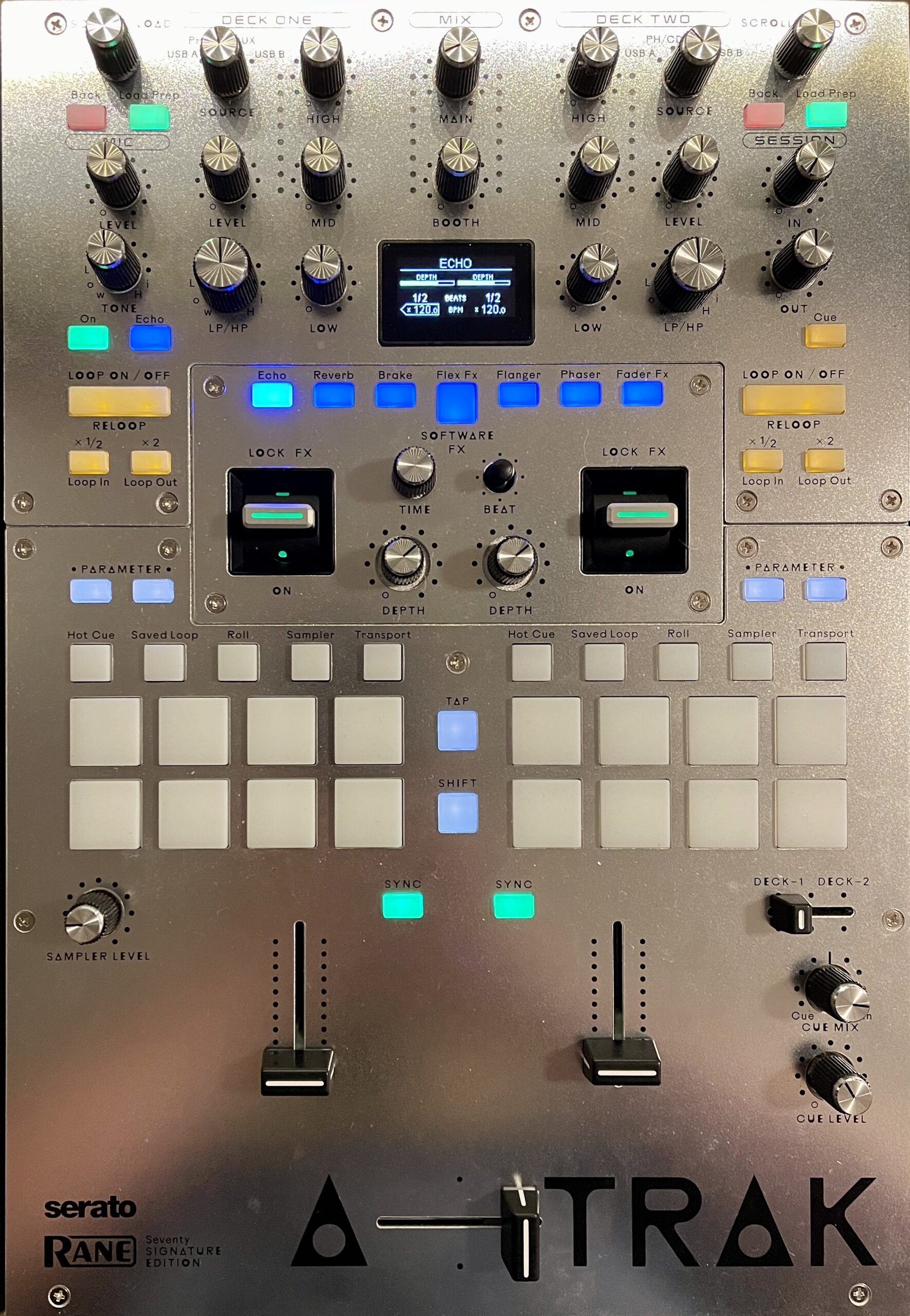
The layout of the Seventy A-Trak Edition is identical to the original Seventy, which takes a lot of cues from the Pioneer DJ DJM-S9 and the Rane Sixty-Two. Most notably, you have the EQs separate from the line selection, gains, and filter knobs in two vertical rows. In between the EQs are the Master and Booth volumes with a small screen below.
Below the EQ section are the standard set of 16 pads. Immediately above the pads on either side are the parameter buttons. The Autoloop controls, located just above the pads, opted for the halving and doubling buttons over an encoder.
The Library controls are on the outer top sides, much like the DJM-S9. Sandwiched in between the Library and Autoloop controls are a pair of knobs. The left side controls Mic 1, while the right-hand side controls the Session inputs and outputs.
In between the faders are a pair of buttons that initially seem to be headphone cues but are customizable to a limited amount of functions. For example, you can set these buttons to Sync, Silent Cue, or Instant Doubles.

The front of the mixer contains the fader customization controls as well as the Mic 2 controls. It is very similar to the Seventy-Two MK2, although it is missing the Deck Swap and Foot Pedal control.
Our take on the layout
Overall, the control scheme on the Seventy is pretty intuitive. Anyone familiar with a standard, pad-based controller scheme should feel comfortable enough. The effects section feels very much influenced by the DJM-S9 – mixed with design cues from the Rane Sixty-Two and Seventy-Two and is likewise easy to figure out.
For me, just about everything I needed was there. I missed some functionality found on the Seventy-Two, like the dedicated Sampler channel filter and effects and the dedicated microphone level LEDs. Still, I didn’t feel hampered much on the mixer.
I feel like most DJs can jump on the mixer and feel pretty comfortable from the get-go.
Pads
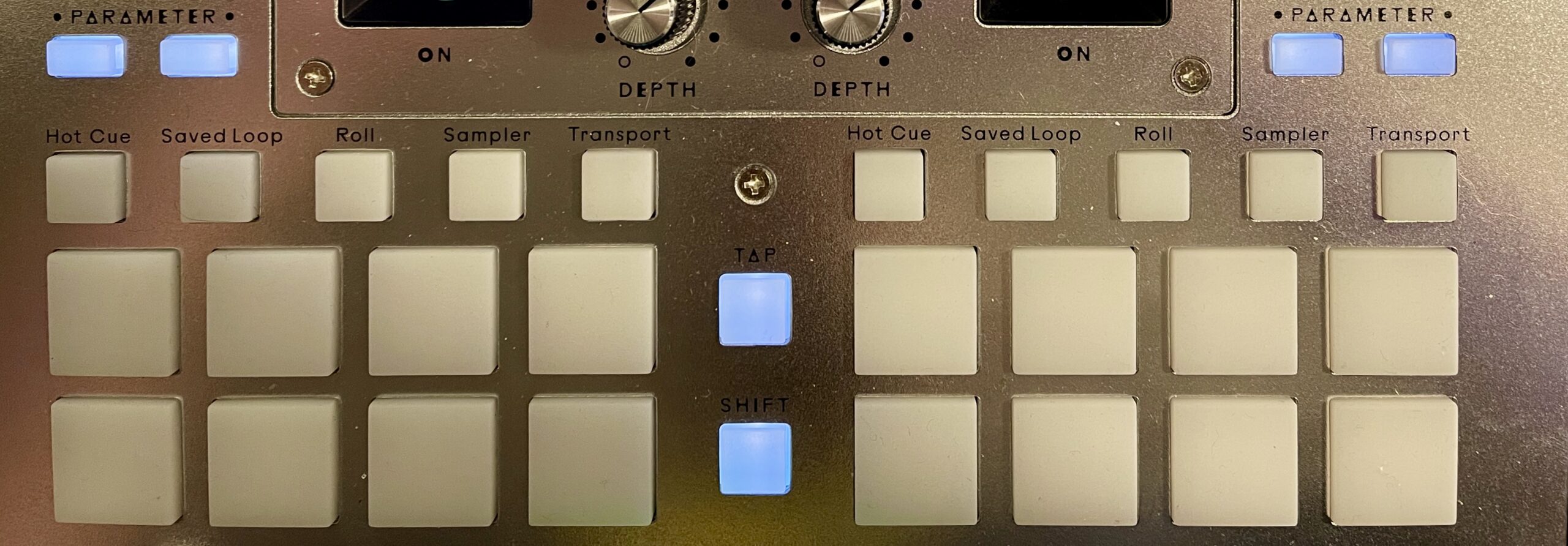
The pads on the Seventy A-Trak Edition feel the same as those on the Rane Seventy Two. Each side has five smaller buttons above that allow you to choose two banks per button, with a total of ten pad modes.
Functionality includes Hotcues, Pitch Play, Saved Loops, Saved Flips, Loop Roll (with beat jump), Sampler, Scratch Bank, and Transport Controls. In addition, there are two custom MIDI banks that you can map to controls.
Compared to the Seventy-Two, Rane has removed several pad modes. There are only two modes per page button instead of the three to four modes on the Seventy-Two. Gone are the Slicer, the Pad and Crossfader FX, and one less custom MIDI page.
The missing features aren’t a huge deal to me, as I never use Slicer or the Crossfader FX and rarely use the Pad FX. However, the pad mode I miss the most is the 3rd custom MIDI layer, as I did utilize all three custom MIDI pages on the Seventy-Two.
Feel-wise, these are identical pads to those found on the Seventy-Two and ONE in that they tend to “sink” a little into the casing instead of staying firm like the pads on the Pioneer DJ mixers.
Faders
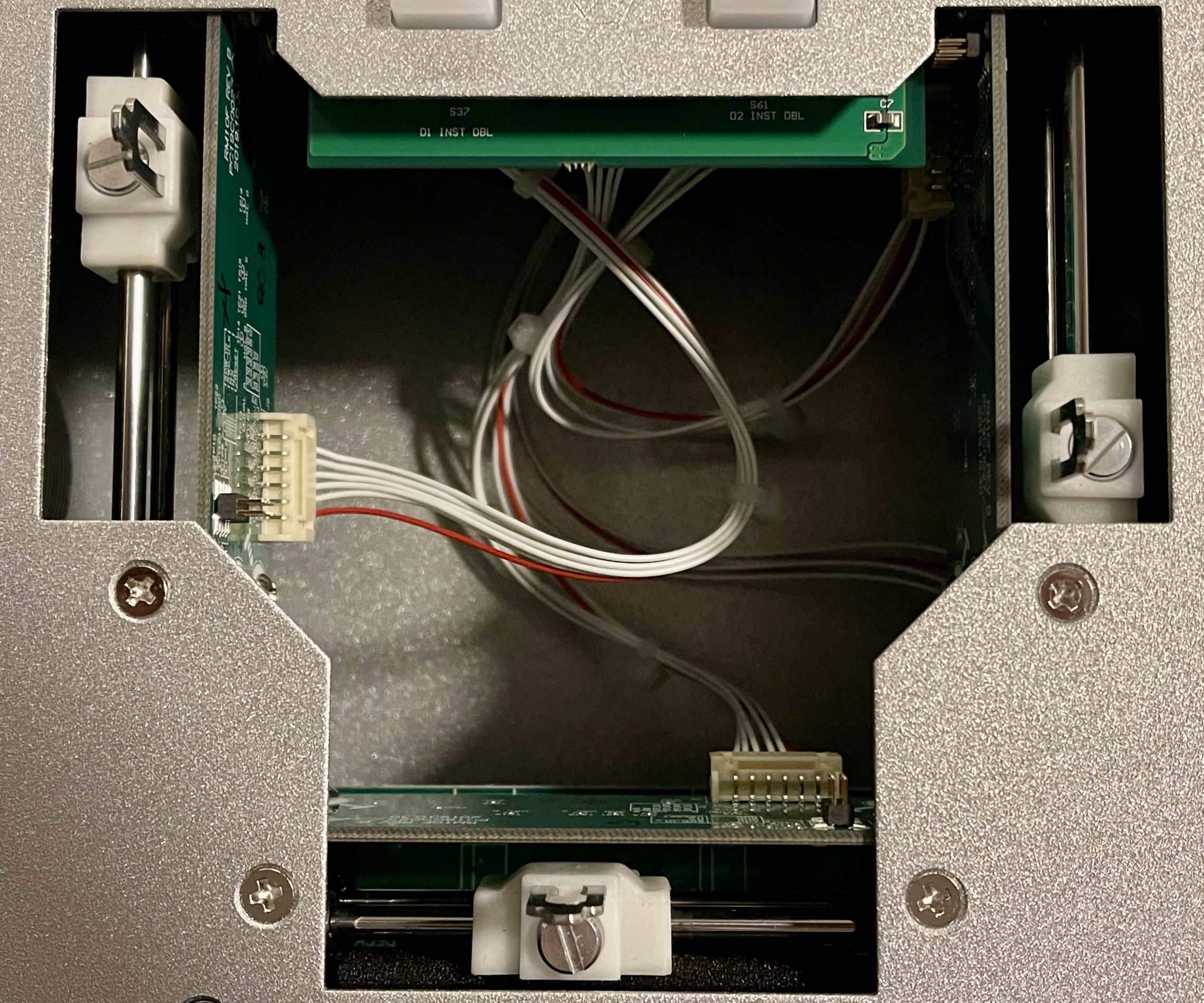
Like all the most recent Rane mixers, all three faders are the latest MagFour contactless faders. While they aren’t my favourite, they still feel great and cut very nicely. The external tension knob allows you to customize the tension to your liking as well. I wish they could cut a little tighter, though, as the cut lag maxes out at about 0.7mm.
Build Quality
I’ve spoken at length about how much I like the sturdy feel of Rane gear. That same quality is there on the Rane Seventy Signature A-Trak Edition. Check out my reviews of the Rane Seventy-Two MKII and Rane ONE for specifics – but it’s the same all-metal construction, scratch-resistant finish, and the same solid feel.
Effects
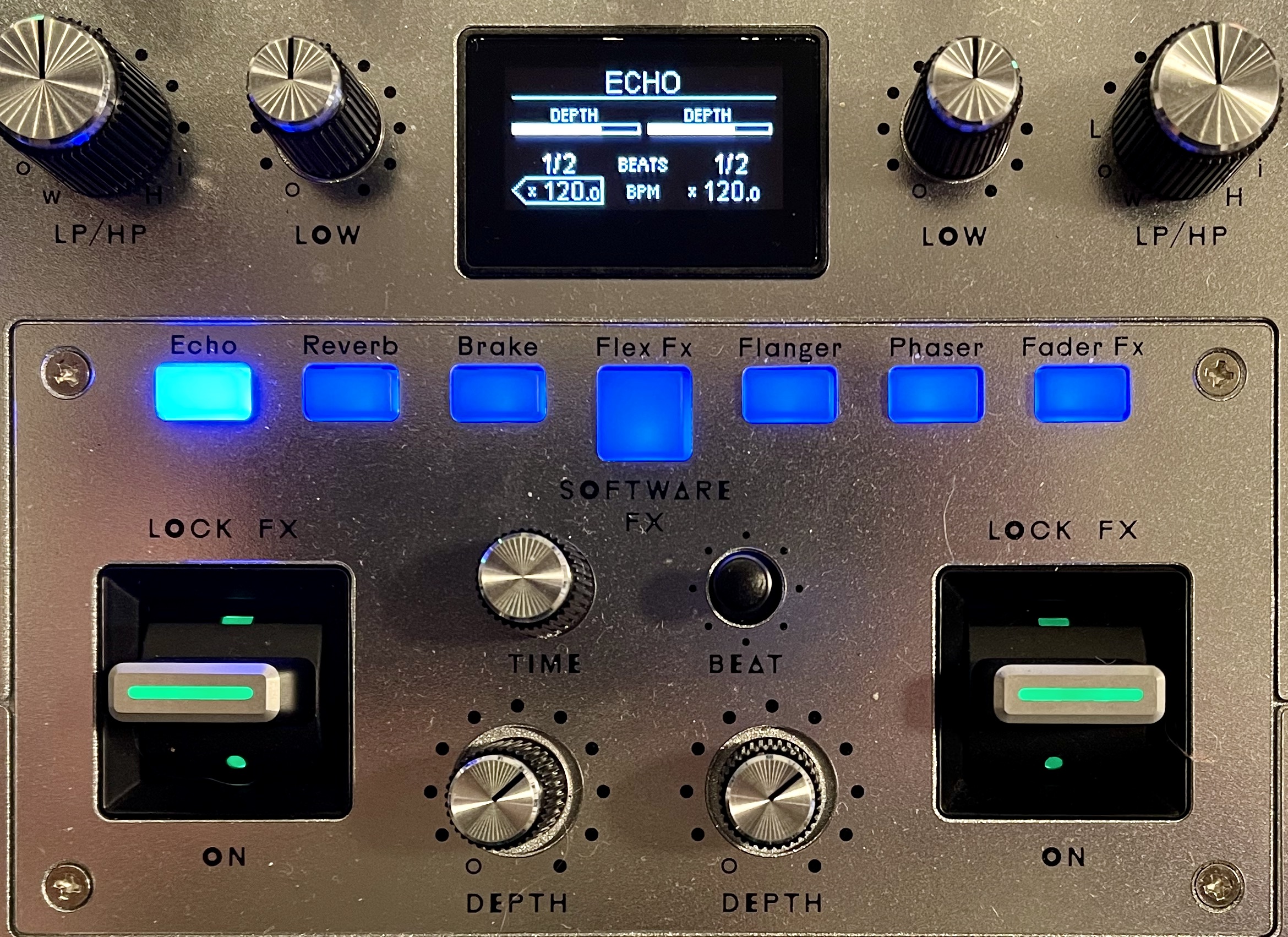
The center effect section reminds me a bit of the old Rane Sixty-Two effects. You can choose between an Echo, Reverb, Brake, Phaser, and Flanger. The last option is the new Fader FX, which replaces the Delay effect on the original Rane Seventy. The center button allows you to switch from hardware effects to Serato software effects, which use the same controls.
The now-ubiquitous effect paddles are also exactly where you would expect them to be. A pair of knobs allow you to adjust the effect depths on each side independently. There’s also a knob and a joystick that will enable you to adjust different effect parameters on the small screen, including customizing effects and adjusting timing. You can customize your effects by holding the Shift button and clicking on one of the effects.
Effects: our overall thoughts
All in all, though, the effects sound good and have an intuitive control scheme. There’s also enough customization that you can dig a little deeper than the defaults and shape your sound how you want it.
There are a few features I like on the Seventy-Two that I miss on this mixer, though – like only having a single hardware effect at a time and not being able to route effects to the Sampler channel like on the Seventy-Two.
Inputs & Outputs

The back of the Seventy A-Trak Edition is identical to the Rane Seventy-Two. Included are the three most common types of connections: XLR, 1/4″ and RCA. Each has a dedicated volume knob. Likewise, each channel has a pair of inputs: one dedicated line-in and a phono input switchable to line-level.
The two microphone inputs are combo XLR/1/4″ jacks and are also switchable to line-level. Like the Seventy-Two, the Microphones only have a tone control vs. a dedicated 2-band EQ.
A pair of USB A and USB B ports for connecting a pair of computers and whatever player, MIDI controller, or accessory you choose to use.
Positives:
Here’s what we liked about the Seventy: A-Trak Edition.
Sound
While I preferred the original Seventy/Seventy-Two sound a bit more, I still enjoy the Seventy A-Trak Edition’s sound profile. I’m not sure the lows are better than the old sound profile, but I’d need to test it on a big system to tell. However, in my headphones and my studio, it sounds great to my ear. And as always, the phono preamps are some of the best in class for DJ mixers.
Build
While materials used aren’t always indicative of build quality, there is a psychological assurance to a piece of gear that feels sturdy and solid. I love the feel of the new Rane mixers. Aside from the solid and heavy feel, the scratch-resistant finish is probably my favourite of all the mixers I’ve used.
Inputs & Outputs
I’ve discussed at length in other reviews my love for Rane’s inputs and outputs. The Seventy offers the same versatile set of inputs and outputs as the Seventy-Two, including the switchable phono and mic inputs.
Filter knobs
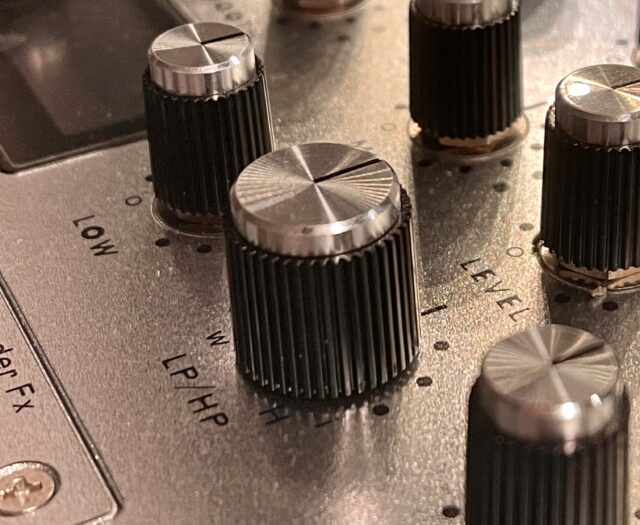
I love these filter knobs. They are big, chunky, and overall quite satisfying to use. I may need to track down a couple of these knobs and replace the filters on my Seventy-Two with them.
Streamlined effects
If you’ve read my reviews (editors note: see here & here) on the Rane Seventy-Two, I make no bones about how much I dislike its convoluted control scheme. While I have since gotten used to it – and even appreciate some of the features now – I still find it poorly designed. With the Seventy, on the other hand, there’s been a considerable improvement to the effects controls. Taking cues from the Seventy-Two, the Sixty-Two, and the DJM-S9, the Seventy offers a much more manageable – albeit more limited – workflow for the effects.
Manually-adjusting BPM
One of my least favourite parts of the new Rane mixers is the lack of auto-BPM detection for audio tracks. While there is a tap tempo feature, the accuracy is honestly abysmal, with a complete lack of a smoothing algorithm. Using the time knob to adjust the BPM manually helps dial in the accuracy much easier. I wish this feature were available on the Seventy-Two (although I prefer an auto-bpm or a more accurate tap tempo).
Scratch Bank

Yup, I still love this feature!
Needs improvements
And now, onto the areas we feel could be better.
Knobs: they look too similar
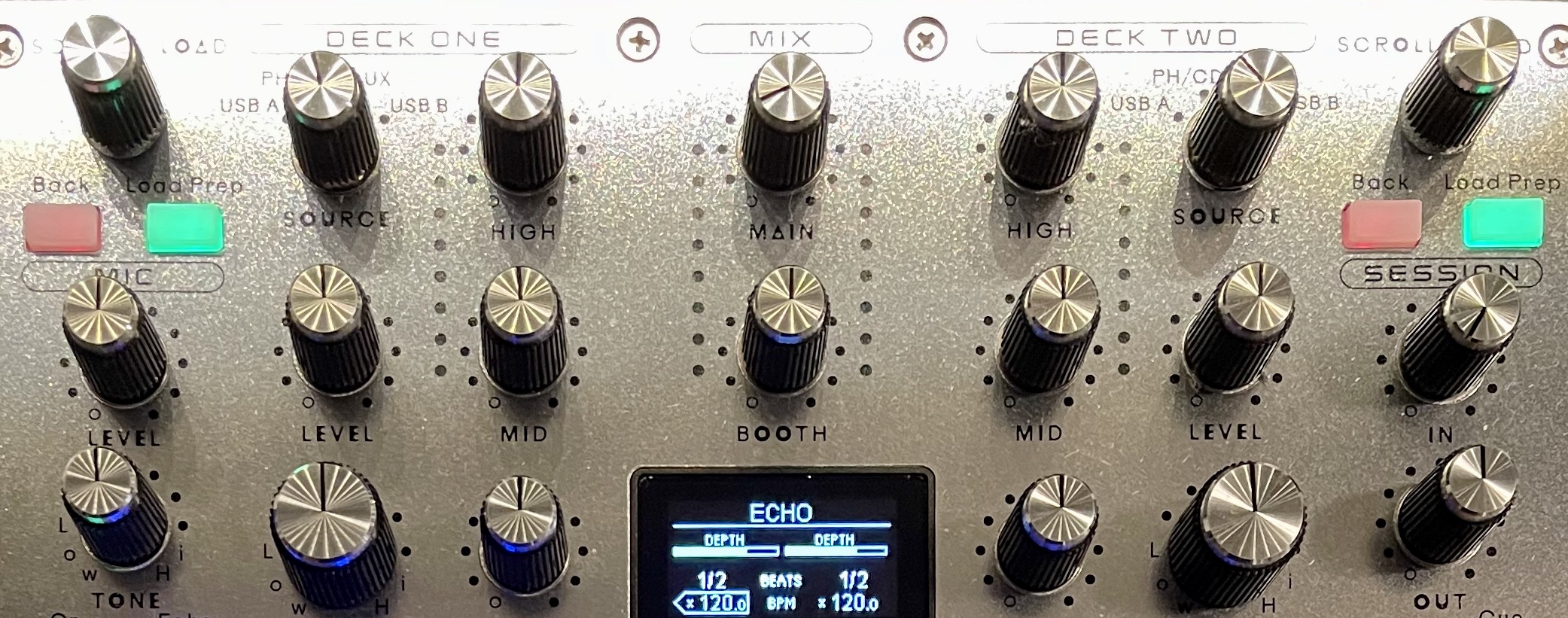
The metal-capped knobs look fantastic in pictures and in-person, no doubt. In practice, though, I found myself having issues differentiating between functions as all the knobs looked identical outside of the Filter.
I would love to see more variation in size and shape to signify different functions.
Dual Depths and Effects BPMs
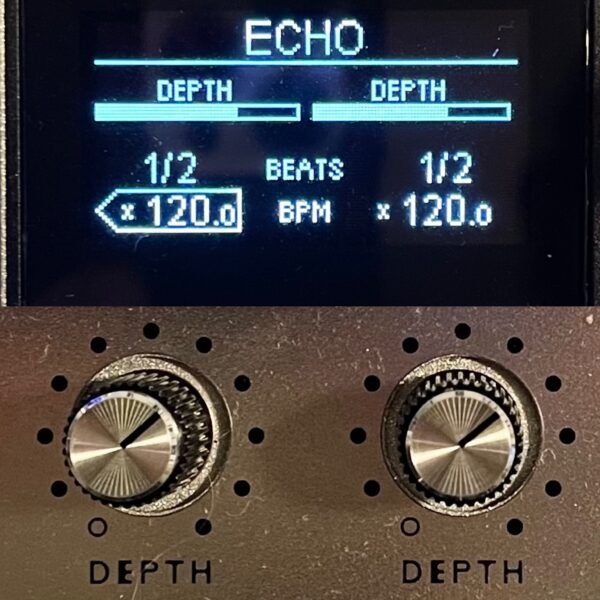
Having dual depths and dual BPM controls is a little problematic to me. The Seventy-Two offers the same scheme, but it makes more sense to set the two hardware effect engines to different effects. Since you can only use a single effect on the Seventy, the independent depth and BPM controls seem slightly unnecessary. I find this made the effects more complicated than necessary, especially when spinning vinyl or using players that don’t have an auto-BPM function.
Brake effect uses depth, not beat
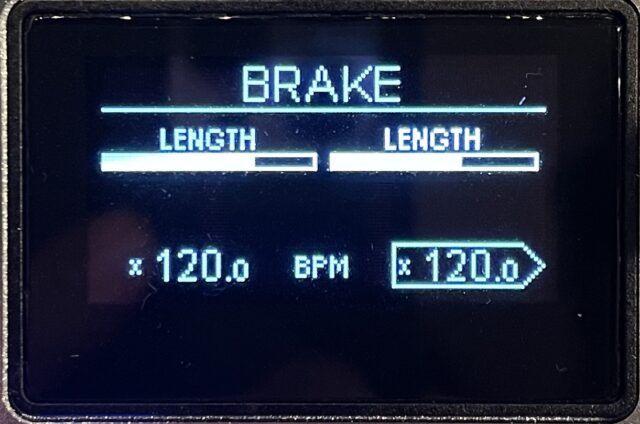
I have no idea why you have to use the depth knob rather than having a beat timing feature. The less I have to adjust the depth knobs, the better. I prefer the Brake effect to be bound to a note length instead.
Split Cue – the switch and position
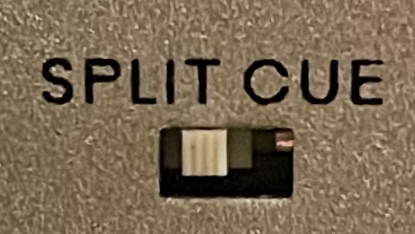
I found the button placement of the Split Cue on the Seventy-Two (and the Sixty-Two before that) to be perfect. Those that use Split Cue often – as I do – tend to use both the Split Cue and the Cue Mix in conjunction, and having those controls next to each other makes sense.
It’s all the more head-scratching that Rane would move the Split Cue control to the front of the mixer instead of what has worked for two generations of hardware.
On top of that, the small switch is a pain to use (literally). The rough texture and heavy resistance of the switch chewed up my fingertips quite a bit. For someone who uses Split Cue a great deal, this is nowhere near as convenient as the workflow on the Seventy-Two.
Control consistency between the Seventy and the Seventy-Two
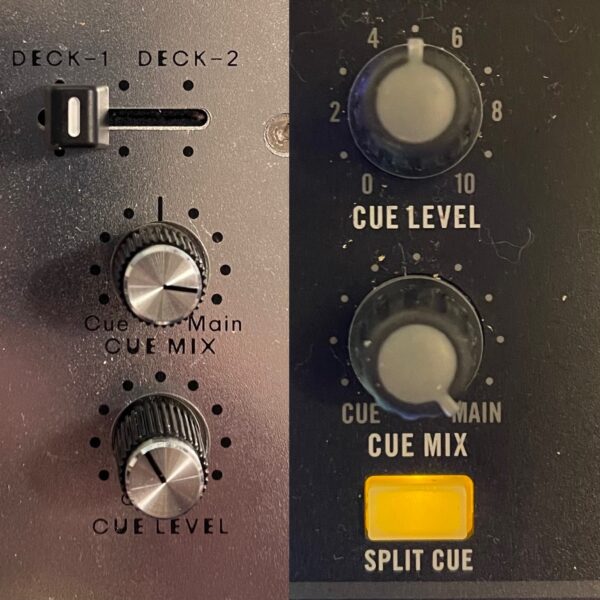
I struggled with the Seventy’s inconsistency with the Seventy-Two in terms of control placement. The most notable change is the aforementioned Split Cue placement. What turned out to be more of an issue was the headphone volume and the Cue/Master knob. On the Seventy-Two (and the Sixty mixers before), the volume knob is above the Cue Mix knob. With the Seventy, it’s the opposite. I get that they wanted to put the Cue Mix knob immediately below the Cue fader, but placing that below the headphone knob would’ve been more consistent.
The Seventy, in general, is rife with these inconsistencies. The Parameter buttons being above the pads (as opposed to below on the Seventy-Two) is one. The Load Prep being a dedicated button instead of shift+the encoder button press is another. Even the SYNC/Silent Cue buttons being exactly where the headphone cue would be on the Seventy-Two lead to confusion for me. I would have loved to see more consistency in the little things to make transitioning between the two mixers smoother. Those with developed muscle memory on the Seventy-Two may take a while to adjust – and regularly flipping between the two mixers can be a challenge.
Final thoughts
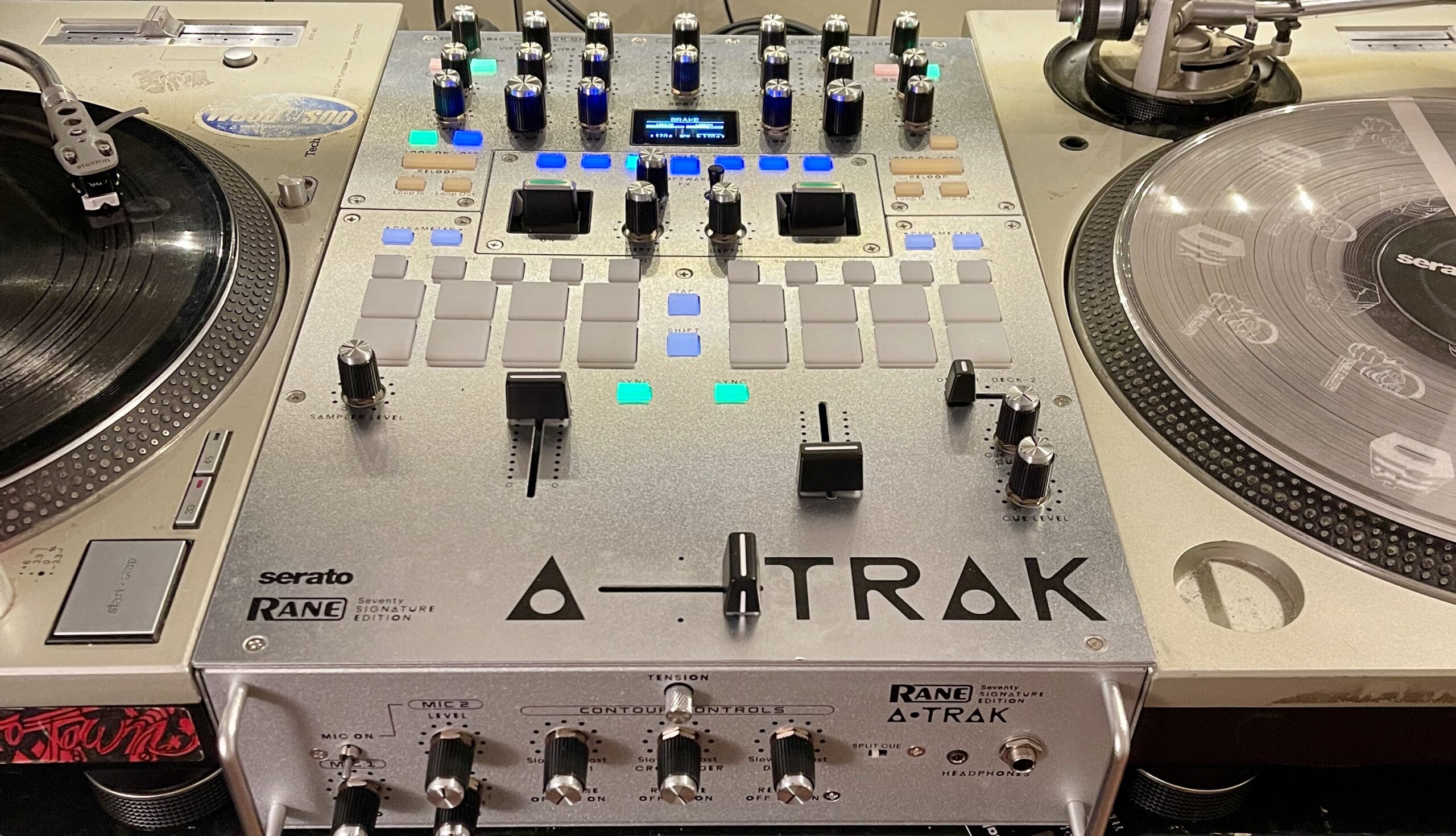
Special Editions
The thing about limited or special edition gear is that it’s often about clout chasing more than anything. You’re essentially paying more money for the same piece of kit with a new paint job. It can be as innocuous as the DJM-S11-SE, costing $100 more for the nostalgic DJM-909 paint job. Or take the just-announced DDJ-1000-OW, where you pay $600 more for a different colour scheme and some branded clothing extras.
That said, the Seventy A-Trak edition is more than just a fresh coat of paint and some new knobs. You get extra functionality in the Fader FX options and a different sound signature that some may prefer.
Is it worth the extra $200 over the OG Rane Seventy?
It ultimately depends on your priorities as a DJ.
From a functionality perspective, the new Fader FX are cool – but not so essential that I’d miss them if they were gone. Granted, someone like A-Trak is going to get a whole lot more use out of it than someone like me.
The sound signature change is also subtle enough that I don’t think it’s necessarily going to be a must-have feature.
It ultimately comes down to the look more than anything. The mixer is striking, no one can deny that. Compared to the more utilitarian design of the regular Seventy, the A-Trak Edition stands out – even if that’s partially thanks to some form-over-function. Ultimately, artists who find the look of their gear to be essential may love this. Collectors who are building their cache of rare equipment will want this as well. Likewise, the resale value of limited edition gear appeals to many. For instance, the Supreme branded version of the MPC Live II retailed for $1,699 earlier this year ($400 more than the standard version). I already see listings on the used market for $2,000-$3,000.
Who is the Rane Seventy Signature A-Trak Edition for?
I think the Rane Seventy Signature A-Trak Edition appeals to the following types of DJs:
- If you like the unique look of the Seventy Signtature A-Trak edition
- If you’re a fan or collector of limited edition gear
- If you like the Fader FX options
- If you think the standard Rane sound signature needs tweaking
The last word: a high-quality mixer with a beautiful look and some unique functionality
I very much enjoyed my time on the Rane Seventy Signature A-Trak Edition. While not quite as robust as the Seventy-Two, the mixer felt solid, powerful, and versatile. Sporting excellent build quality, high-quality faders, versatile inputs and outputs, and that fantastic Rane sound, this is a solid option in the two-channel realm.
All in all, there is enough unique and new functionality that sets the Seventy Signature A-Trak Edition apart from other “limited edition” gear – which is often simply a facelift. The Fader FX will appeal to those turntablists and scratch DJs looking for more tools to unlock their creativity. For the rest, even if the eye-catching look is a little more sizzle than steak, it will still turn many heads. And for some people, that’s enough to justify the purchase.
What do you think of the Rane Seventy Signature A-Trak Edition? Is limited edition gear a must-buy? We’ve got orders open in the DJTT store if you feel like getting one of these limited units.





